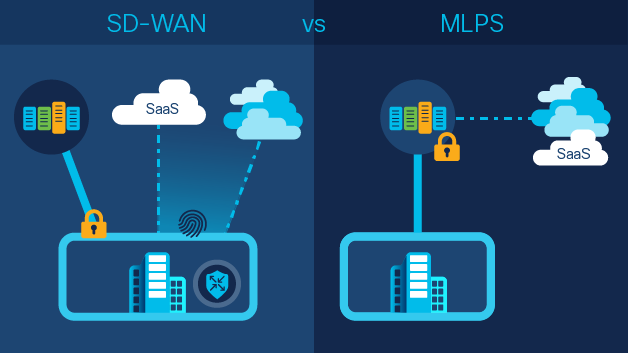What is MPLS?
Multiprotocol Label Switching (MPLS) is a transport protocol used in traditional networking to move data packets to a destination as quickly and efficiently as possible. It's been in use for over two decades.
Organizations must install physical MPLS circuits at sites where they want to facilitate the exchange of data.
For example, an enterprise could have MPLS circuits installed at a remote branch office and at a corporate data center that users in that branch location need to access.
MPLS is known for its reliability and performance where data travels along predetermined paths. But as organizations move to the cloud, they require a more flexible, agile, and cost-effective approach to network connectivity to ensure an optimal user experience.
What is SD-WAN?
Software-defined wide-area networking (SD-WAN) is a software-based approach to managing the WAN. As with MPLS, enterprises use it for network connectivity between locations such as remote branches, data centers, cloud instances, and the devices of employees working from home.
SD-WAN is an evolution in connectivity from traditional MPLS technology. It enables customers to prioritize critical business traffic and take advantage of a variety of transport methods, such as MPLS circuits, direct internet broadband, and LTE/5G. It simplifies the management of the WAN and makes it independent of transport layers.
One reason more organizations are upgrading to SD-WAN is the rapid rise of remote work and cloud adoption. SD-WAN provides edge users with more secure, reliable network connections when they access enterprise applications and data anytime, anywhere, while delivering a predictable user experience.
SD-WAN enables enterprises to prioritize data based on its type and then choose the shortest, fastest, and most reliable and cost-effective path available.
What is SASE architecture?
Secure access service edge (SASE) provides unified networking and security capabilities in a cloud-delivered service to deliver access and security from edge to edge, including users, data, applications, branch office, and beyond.
SASE is a network architecture that combines VPN and SD-WAN capabilities with cloud-native functions. Those functions, secure web gateway, cloud access security broker (CASB), firewall, and zero-trust network access, are provided by the SASE vendor as a single, integrated offer that is delivered from the cloud.
SASE is a vision for what secure networking should look like in the future. Today, SASE can be delivered through the convergence of cloud-managed SD-WAN and cloud-delivered security.
SD-WAN is a foundational element of a SASE architecture, as it will allow organizations to gradually transition to a SASE architecture on their own timetable. SD-WAN adoption also helps enterprises realize their cloud transformation strategies.
